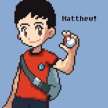'DDLC' and 'Yume Nikki': Can Video Games Be Art?
Matthew Hayhow takes a look at metafiction and exploration games to try to answer this controversial question.

CW: This article refers to games with disturbing themes.
I have always liked video games. Despite this, occasionally I find myself in arguments where this isn't enough to escape other people's derision and accusations of being out of touch. Apparently it's not sufficient to enjoy games—for some reason, you have to believe that they're art, too.
I've often said that video games can not be art by the definitions of what "art" is, and what a "game" is. To start with the former, I subscribe to the definition that art is something the primary purpose of which is to elicit beauty and emotional power. A game, by definition, cannot be art because its primary purpose is for the player to have fun. Every game, whether it's football, chess, or Street Fighter II, essentially comprises two things: an objective and a set of rules by which you obtain that objective. For some reason, humans take enormous pleasure in doing this, which, to me, is enough to justify the existence of games. As sophisticated an experience Wolfenstein II is, you are still following the same instincts as someone kneeling on the floor with a deck of cards playing Solitaire. If you asked me whether pornography is art or not, I would be even more unequivocal; no, because no matter how beautiful the cinematography or compelling the story, that's probably not the main reason you're watching.
There is the argument that video games tell stories like literature or cinema, and while that's true and many games have quite interesting stories, again, is that really the primary purpose of a game like The Last of Us? Do we play it for the same reason we read Cormac McCarthy, or do we play it because it's fun to play hide and seek with scary monsters? As well-written as that game is, its narrative seems incidental, as if it didn't even need to be a video game. You could imagine The Last of Us as a movie; in fact, you don't even have to imagine, as YouTube is full of videos editing all of the cutscenes together into a feature-length film.
And that's fine. That's good. An interest or pastime can be valuable and worthwhile without having to slap the label of "art" onto it. Food, sex, conversation, irony, the study of nature—these are all part of the rich tapestry of life, but I wouldn't call any of these things "art." I like the game Yoshi's Island more than I like most of the people in my life, and I can say that whilst having no qualms about calling it a piece of entertainment rather than art.
However, I've since come across certain games that challenge these ideas. Games that could only work as games. Games that, as an experience, have the power of a novel or a film. The first of these is a visual novel with cute anime girls.
Doki Doki Literature Club at first appears to be a typical dating simulator; it's a game where you join the literature club of a Japanese high school and interact with four girls. One of the girls is a ray of sunshine. One girl is a shrinking violet. One of the girls is feisty who hides a sweet side, and they all seem really into you despite not seeming interested in literature at all. However, as the game goes on, and I'm trying not to spoil too much here, not all is as it seems. The story unravels into a tale of abuse, self-harm, and suicide that succeeds in balancing both weighty science-fiction themes with its more somatic exploration of mental illness. It is a beautiful, terrifying game.
But as I said, lots of games have good stories. But perhaps what is different about DDLC is that it's impossible to conceive in any other medium. For one, a lot of the horror elements are intrinsic to the fact that it's a video game. Glitches, sinister pop-ups, taking away your control of the choices you make, are all elements that not only scare you, but add weight to the story and the characterization. This playfulness with the medium of games itself introduces a kind of metafiction unique to video games. Whilst with other mediums you interact with the piece by observing it (e.g: watching or reading), you interact with video games directly through the medium of a controllable protagonist. But more postmodern games can draw attention to this fact, thereby making you, sitting behind that computer, as opposed to a virtual you in the game, a character in the narrative. Many books and films address the reader, and some books and films such as Don Quixote or Tristram Shandy are self-aware, but it is impossible to properly adapt a story where you, the player, are a character, into another medium. Doki Doki Literature Club is a powerful experience, and it only works as a game.
I'm not saying that a game has to be metafiction to be art, rather that that is one technique which can untie a game from the label of entertainment. You could argue that visual novels aren't really games, as they don't require skill. You can't "lose" Doki Doki Literature Club. I disagree, and besides, there are other metafictional games such as Pony Island and OneShot which aren't in the visual novel form. But as it happens, I recently played a game from 2004 (but has mysteriously appeared on Steam recently) which contains all the elements of a game, and demonstrates the medium's artistic capacity in a different way.
Yume Nikki, which, incidentally, DDLC developer Dan Salvato cites as an influence on his game, is unquestionably a game; there is an objective and a set of rules to obtain that objective. You play as a girl called Madotsuki, who will not leave her apartment. Apart from a broken TV and a Famicom, all she has to occupy her are her dreams, the exploration of which makes up most of the game. You begin with a nexus of twelve doors, each of which leads you into a dream world. These worlds have doorways into other dream worlds, which lead to other dream worlds, and so on. It is a hugely expansive game, especially impressive when you consider that a single person, the enigmatic Kikiyama, made the entire game.
The objective of the game is to collect 24 objects, known as "effects," which allow you to view the game's "ending." However, when playing the game, this objective feels like a loose armature onto which the game hangs. Its lack of hand-holding direction, quests and side-quests, or even dialogue means that most of the game is spent exploring this world, and it becomes clear that exploration is basically the point of the game. You travel through surrealist dreamscapes and encounter odd creatures, some neutral, some malignant. Imagine a cross between David Lynch and Hayao Miyazaki. Exploration is the pleasure of Yume Nikki; you don't need much else.
It does become clear after a while that there's a sinister resonance behind the weird and whimsical dreams. Eyes and hands are recurring symbols throughout the game. Sometimes creatures can trap you in a room where there's no escape except to wake up from the dream. In one part of the game, you can stab through a wall which looks like a zipper, leaving a bloody—some would say hymenal—gap. You pass a quite phallic but benevolent-looking creature into a door where the screen fills with static, resembling a terrifying face. There are many readings of Yume Nikki, often suggesting that Madotsuki's dreams reflect her waking life, and that she is traumatised by an event or events that have happened to her, possibly sexual assault. In any case, the game effectively tells a story through the atmosphere and symbolism of its surroundings, and in a very interesting, subtle way, you learn about the girl you are playing as, and that there is much more texture to her than you might have thought. It's a game about loneliness, the nature of dreams, and how we process trauma. And again, Yume Nikki is an experience that can't be replicated in any other medium.
These are just two examples; Yume Nikki and Doki Doki Literature Club are by no means the only two games which effectively use metafictional and/or explorational elements to create a unique experience. And these are by no means the only way a game can justify itself as an art form through using the medium of video games and its components as a method of telling its story. But games like this are still few and far between.
Nevertheless, it's important to remember that video games are still in their infancy. One could compare video games as they are now to early cinema. Films from the first few decades of cinema often look very flat, filmed largely in midshot. It wasn't until the 1940s, when the work of Orson Welles and Alfred Hitchcock fully drew out the capabilities and grammar of filmmaking, that movies began to look like what we would recognise as a movie, and that cinema began to be accepted as, you guessed it, an art form rather than an entertainment. Currently, games don't seem to be aware of the full capabilities of the medium, instead relying on ideas borrowed from films such as cinematic cutscenes. I don't believe gaming has had its Citizen Kane moment yet, but this is a new way for artists to express themselves, and one which incorporates so many different forms of expression into a single medium. Instead of treating games with snobbishness and contempt, we should be excited at the emergence of this new, exciting art form.
About the Creator
Matthew Hayhow
Written and edited for all sorts of online publications about films, TV, music, books and video games. You look nice today. Twitter - @Machooo






Comments
There are no comments for this story
Be the first to respond and start the conversation.